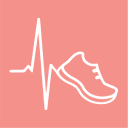A foam roller is a no-fuss piece of equipment that’s made its way from physical therapist offices to households around the country. It has been known to help with muscle soreness and post-workout recovery and is recommended by wellness gurus Lauren Roxburgh and Will Cole for various lymphatic system benefits.
For Dan Giordano, DPT, CSCS, the cofounder of physical therapy practice Bespoke Treatments, the main benefits are simple but powerful: “What it comes down to is facilitating blood flow, improving flexibility, modulating pain, and speeding up recovery,” says Giordano.
However, this practice only works if you’re doing it correctly—and that doesn’t mean only taking out your foam roller when your thighs are sore after leg day.
With foam rolling becoming a popular piece of home gym equipment, we had Giordano break down the foam rolling mistakes he notices most frequently, from areas you should avoid rolling to going beyond a one-directional approach.
5 Common Foam Rolling Mistakes
1. You Only Use It as a Cool-Down Tool
Foam rolling your muscles post-workout can aid recovery and promote relaxation, but if you’re only using a roller after your sweat session is over, you’re doing yourself a major disservice. In fact, when used before a workout, rolling can be more effective than conventional stretching. Studies have shown that static stretching (the kind where you hold a pose for around 30 seconds) can actually decrease your performance during a workout, “whereas foam rolling has been shown to improve blood flow and warm up the tissue without negatively affecting your strength,” says Giordano.
RELATED: The Important Practice That’s Missing From Your Wellness Routine
He says to warm up with a roller and focus on each muscle group for about 15–30 seconds. For your cool-down, roll each area for a longer time period (between 90–120 seconds) to promote relaxation.

2. You Only Focus On Your Lower Body
While the legs and butt are the most obvious (and easiest) areas to cover, don’t forget your upper half. Roll out your arms and shoulders during your warm-up and cool-down and after a long day at work. “You should use [a roller] if you’re sitting at a desk all day,” says Giordano. “Tissues get tight, and there’s decreased blood flow when you sit and don’t move, so you should use it on your postural muscles.”
RELATED: 5 Simple Tips to Improve Your Posture—for Confidence and Overall Health
3. You Roll Your Lower Back
While you don’t want to ignore your upper body, you should avoid rolling the neck and lower back, Giordano says. While it might feel good to roll out areas of tension on your lower back, the risk outweighs the reward. “The lumbar spine [lower back] is not supposed to be mobilized,” he says. “So if you’re causing something in the area to put pressure on that, you can cause the muscles surrounding the spine to spasm, which can lead to back pain.”
4. You Use Too Much Pressure
“It shouldn’t be painful,” Giordano says. “Some places are going to hurt––don’t get me wrong––but it should be more like getting a massage on a tender area.” If it feels painful, take a little weight off the roller. “Start with less,” he says. “Let’s say you sit on your butt when you foam roll your calf. From there, try putting one calf on the roller, pushing through your hands, and lifting your butt up in the air to increase the body weight. As you improve from that, maybe take the other leg and cross it over to put more body weight on the roller.”
5. You Only Roll In One Direction
You’ll most commonly see people rolling their muscles up and down with the foam roller horizontal on the floor. But that’s not the only way to do it. “You also want to go side to side,” Giordano says. He says to roll as you normally would and stop when you feel a trigger point or a sore area. Then flip the roller around vertically (so it’s parallel with your body) and roll the muscle again to decrease fascial restrictions, he says.
(Image: Shutterstock)





























